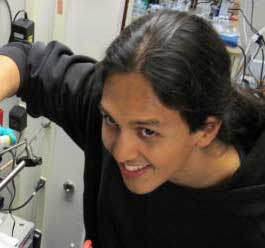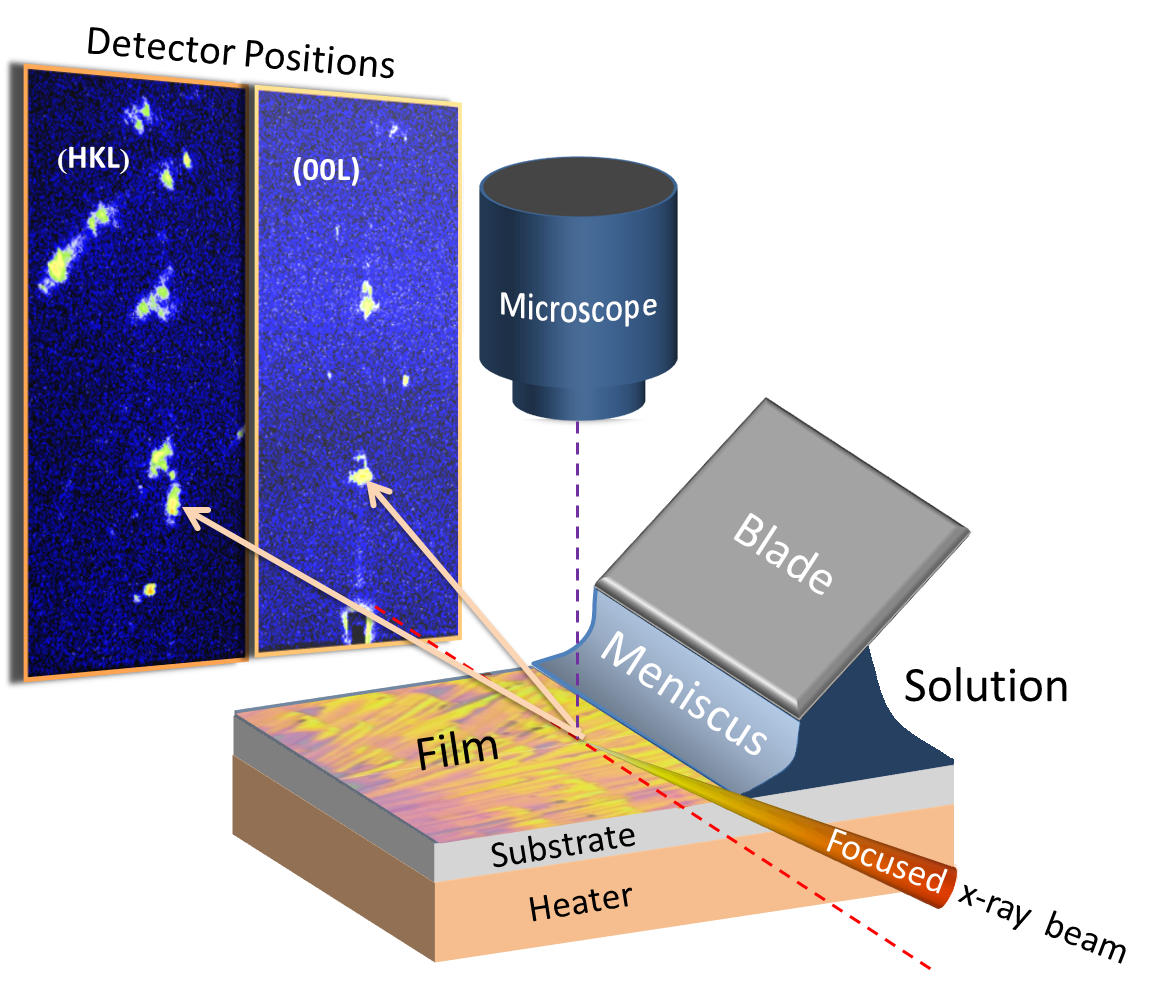X-RAY RUNS: Apply for Beamtime
2017 Nov 1 - Dec 21
2018 Feb 7 - Apr 3
2018 Proposal/BTR deadline: 12/1/17
2018 Apr 11 - Jun 4
2018 Proposal/BTR deadline: 2/1/18
Gaurav Giri, known to his friends as Gino and shown in the midst of action in Figure 1, is receiving the 2013 Melvin P. Klein Award for his work on solution shearing of organic semiconducting molecules. The Klein Award recognizes outstanding research accomplishments by students and postdocs at SSRL and intends to promote dissemination of research results. Gino is currently a Stanford graduate student working with Zhenan Bao in the Department of Chemical Engineering.

Figure 1 Gino preparing another in-situ real-time coating experiment at CHESS D1 station.
Gino approached KAUST collaborator Aram Amassian and CHESS Staff Scientist Detlef Smilgies two years ago with what can be thought of as an outrageous experiment: watching organic thin films crystallize in-situ and in real-time during the solution shearing process. In solution shearing a drop of solution is spread with a coating knife at a specific speed, as depicted in Figure 2; coating gap, concentration of solute and substrate temperature also determine the thickness and quality of the resulting film. Because of the small zone over which the film solidifies, this experiment requires a beamsize of less than 20 microns and a millisecond time resolution. The idea grew out of Gino’s prior extensive work at SSRL to analyze shear-coated molecular films after deposition using beamline 11-3 which led to the discovery of a strained TIPS-pentacene polymorph with very high mobility. This prior work recently resulted in a letter to Nature [1].

Figure 2 Schematic of the solution shearing experiment: A drop of solution of the organic semiconductor is spread with a blade at well-defined gap and speed. At the edge of the meniscus the film solidifies to form at 50-100 nm thick coating. Film formation is imaged optically with the sample microscope. The film is probed with an x-ray microbeam and scattering images are collected with a fast area detector. For details see [2].
Starting from a primitive ad hoc kludge, Gino convinced his collaborators that such an experiment is in fact doable and worked with Smilgies to develop a miniature coater that fits on a sample goniometer [2], but can replicate the coating conditions that he had explored earlier on his large-scale lab system at Stanford. The results of this collaboration will benefit the new in-situ beamline presently under development at SSRL. Gino has shown extraordinary devotion and creativity to develop the set-up and perform experiments under sometimes odd conditions. Nonetheless, all this effort helped to develop the CHESS in-situ coating system over the past 2 years, so that relevant coating conditions could be reached [3]. We congratulate Gino on a well-deserved Klein-Award!
References:
[1] G. Giri et al, Nature 480, 504-509 (2011).
[2] D.-M. Smilgies et al., Physica Status Solidi - Rapid Res. Lett. 7, 177-179 (2013).
[3] G. Giri et al., in preparation.
Submitted by: Detlef Smilgies, CHESS, Cornell University
8/30/2013
